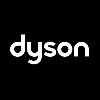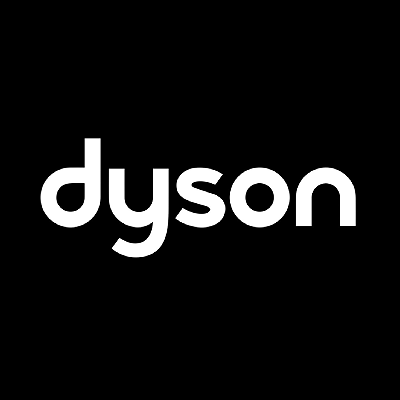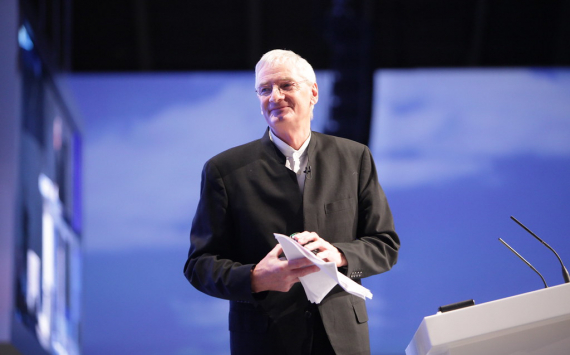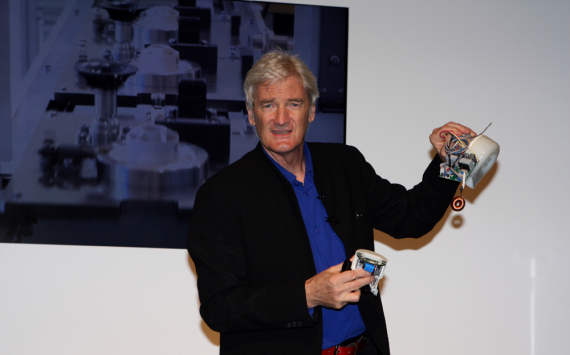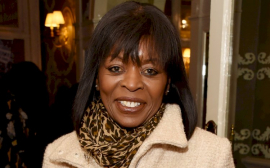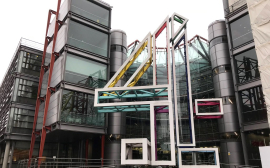Description
Dyson Limited is a British technology company established in the United Kingdom by James Dyson in 1991. It designs and manufactures household appliances such as vacuum cleaners, air purifiers, hand dryers, bladeless fans, heaters, hair dryers, and lights. As of February 2018, Dyson had more than 12,000 employees worldwide.[7] In January 2019, it was announced that Dyson would move its headquarters to Singapore to ramp up manufacturing for their electric vehicle (EV), stating Asia trade will be their main focus and commenting that the company was unhappy with EU/UK bureaucratic restrictions;[8][9][10] however, the termination of the EV programme was announced on 10 October 2019.
History
In 1974, James Dyson bought a Hoover Junior vacuum cleaner, which lost suction after a period of use. Frustrated, Dyson emptied the disposable paper bag to try to restore the suction but this had no effect. On opening the bag to investigate, he noticed a layer of dust inside, clogging the fine material mesh.
Later, Dyson was working on his ballbarrow at a company he had founded (but no longer entirely owned) where a large vacuum system was used to contain the fusion bonded epoxy coating that was sprayed on the wheelbarrow arms as a powder coating. Dyson found the system inefficient, and was told by equipment manufacturers that giant cyclone systems were better.[15] Centrifugal separators are a typical method of collecting dirt, dust and debris in industrial settings, but such methods usually were not applied on a smaller scale because of the higher cost.[16] He knew sawmills used this type of equipment, and investigated by visiting a local sawmill at night and taking measurements. He then built a 30-foot model for the ballbarrow factory.[15] While constructing this at home, Dyson realized the function of the cyclone was to extract dust without clogging. Wondering if this could be applied at a smaller scale to a home vacuum, he constructed a cardboard model with sticky tape, connected it to his Hoover with its bag removed, and found it worked satisfactorily.
The directors of the ballbarrow company thought if a better vacuum was possible, Hoover or Electrolux would have invented it. Dyson was undeterred, and was kicked out of his company.[15] Jeremy Fry provided 49% of the investment for cyclonic vacuum development, and the rest came from a loan. In the shed behind his house,[15] Dyson developed 5,127 prototype designs between 1979 and 1984.[17] The first prototype vacuum cleaner, a red and blue machine, brought Dyson little success, as he struggled to find a licensee for his machine in the UK and America. Manufacturing companies such as Hoover did not want to license the design, probably because the vacuum bag market was worth $500m and thus Dyson was a threat to their profits.
The only company that expressed interest in the new cyclonic vacuum technology was Dyson's former employer, Rotork. Built by Italian appliance maker Zanussi and sold by Kleeneze through a mail order catalogue, the Kleeneze Rotork Cyclon was the first publicly sold vacuum cleaner of Dyson's design. Only about 500 units were sold in 1983.
In April 1984, Dyson claimed that he had sent the prototype machines, drawings, and confidential information to American consumer-products maker Amway as part of a proposed licensing deal. The deal fell through, but in January 1985 Amway produced the CMS-1000, a machine which was very similar to the Dyson design. Less than a month later, Dyson sued Amway for patent infringement.
In 1985 a Japanese company, Apex Ltd., expressed interest in licensing Dyson's design and in March 1986 a reworked version of the Cyclon – called G-Force – was put into production and sold in Japan for the equivalent of US$2,000.[20][18] The G-Force had an attachment that could turn it into a table to save space in small Japanese apartments.[16][verification needed] In 1991, it won the International Design Fair prize in Japan, and became a status symbol there.
Using the income from the Japanese licence, James Dyson set up Dyson Appliances Limited in 1991. The first dual-cyclone vacuum built under the Dyson name, the DA 001, was produced by American company Phillips Plastics in a facility in Wrexham, Wales, beginning in January 1993 and sold for about £200.[18] Vacuum assembly took place in the unused half of the plastic factory.[15] Due to quality control concerns and Phillips's desire to renegotiate the terms of their contract to build the vacuum cleaner, Dyson severed the agreement in May 1993. Within two months he set up a new supply chain and opened a new production facility in Chippenham, Wiltshire, England;[18] the first vacuum built at the new facility was completed 1 July 1993. The DA 001 was soon replaced by an almost identical cleaner, the DC01.
Dyson licensed the technology in North America from 1986 to 2001 to Fantom Technologies, after which Dyson entered the market directly.
Even though market research showed that people would not be happy with a transparent container for the dust, Dyson and his team decided to make a transparent container anyway and this turned out to be a popular and enduring feature which has been heavily copied.[21] The DC01 became the biggest selling vacuum cleaner in the UK in just 18 months.[16] By 2001, the DC01 made up 47% of the upright vacuum cleaner market.
The company introduced a cylinder machine, the DC02, and produced a number of special editions and revised models (DC02 Absolute, DC02 De Stijl, DC05, DC04, DC06, DC04 Zorbster). On 2 January 2001 the company name was shortened from Dyson Appliances Ltd. to Dyson Ltd.[1] In April of that year the DC07, a new upright vacuum cleaner using "Root Cyclone" technology with seven cyclone funnels instead of the original dual-cyclone design, was launched. By 2009 Dyson began creating other technologies: the Airblade hand dryer, the Air Multiplier "bladeless" fan and Dyson Hot, the "bladeless" fan heater.[23] In October 2019, Dyson released the Pure Cryptomic, available in a fan version and a heater + fan version. The device is able to remove formaldehyde from the air; this flammable and colourless gas can irritate the skin, eyes, nose, and throat.
Production moves to Malaysia and Singapore
Dyson vacuum cleaners and washing machines were made in Malmesbury, Wiltshire until 2002, when the company transferred vacuum cleaner production to Malaysia. There was some controversy over the reason for this move, as well as over plans to expand Dyson's factory to increase production.[25] Trade unionists in Wiltshire claimed that the move would negatively impact the local economy through the loss of jobs. The following year, washing machine production was also transferred to Malaysia.[26] This move was driven by lower production costs in Malaysia (30% less than in the UK); it resulted in the loss of 65 jobs.
In 2004, the Meiban-Dyson Laundry Manufacturing Plant was opened in Johor, Malaysia. The RM10 million (approx. US$2.63 million) plant is a joint venture between Dyson and the Singapore-based Meiban Group Ltd., which has manufacturing facilities in Singapore, Malaysia and China.[28] Dyson stated that the cost savings from transferring production to Malaysia enabled investment in research and development at their Malmesbury head office.
In 2007, Dyson formed a partnership with the Malaysian electronics manufacturer VS Industry Bhd (VSI) to take on a major role in Dyson's supply chain, from raw material sourcing and production to distribution. VSI also undertook an extensive production plan to supply finished product to Dyson's markets around the globe (America, UK, Japan, etc.).
It is said that Dyson has around 7,000 employees.[31] Dyson has not publicly stated where those employees are located, though it is known that VS Industry Bhd (VSI) currently has around 4,250 employees at their Malaysian facility which manufactures Dyson products,[32] and in 2007 it was reported that Dyson alone was responsible for 80% of VS Industry Bhd revenue.
Dyson launched a $360 million plant in Tuas, Singapore in 2013, which can produce four million digital motors a year.[34] In 2016, Dyson injected $100 million to increase output to an estimated 11 million digital motors a year.
US expansion in Chicago
In January 2017, Dyson announced its US headquarters and operations would move to the Fulton Market District in Chicago by end of year.[36] The move added 100 employees to the company's Chicago headcount with over 40,000 square feet of newly leased office space.
UK expansion at Hullavington
On 28 February 2017, Dyson announced a significant expansion programme in the UK, opening a new high-tech campus on the former RAF Hullavington Airfield in Hullavington, Wiltshire, about 5 miles (8 km) south of its Malmesbury site.[37][38] It has been suggested that research there will focus on battery technologies, following the acquisition of US start-up Sakti3, and robotics.
HQ moving to Singapore
On 22 January 2019, Dyson announced plans to move the company HQ to Singapore, to be closer to its fastest growing markets.[39] The move however will only take place in 2021, after Dyson finishes renovating St James Power Station, a former coal-fired power plant built during pre-World War II colonial Singapore days in 1927.
Products
Research projects
Robotic vacuum cleaners
In 2014, Dyson invested in a joint robotics lab with Imperial College London to investigate vision systems and engineer a generation of household robots.[41][42] In 2001 the company had been close to launching a robot vacuum, the DC06, but James Dyson pulled it from the production line as it was too heavy and slow.
Collaboration with universities
Dyson funded a professorship at the University of Cambridge Department of Engineering in November 2011, adding to earlier funding of post-doctorate research. The Dyson Professor of Fluid Mechanics focuses on teaching and researching the science and engineering behind air movement.[44] In addition, Dyson invested hundreds of thousands of pounds in a Dyson research branch at Newcastle University in May 2012, to investigate the next generation of Dyson digital motors and motor drives.
Solid-state batteries
In March 2015, Dyson invested in its first outside business, paying $15m for an undisclosed stake in US battery start-up Sakti3, which is developing solid-state batteries.[45] Dyson acquired the remaining stake in Sakti3 for $90m in October 2015.[46] Dyson researchers had been working on battery technology since 2010.[46] In 2017, Dyson abandoned its licensing of patents held by the University of Michigan, casting doubt on Sakti3's technology.
Electric vehicles
In September 2017, company founder James Dyson announced via email to employees that the company had 400 people working on a battery electric vehicle, secretly in the works for two years, which it hoped to release by 2021.[48][49][50] Further information about the company's plans emerged in February 2018, with news of three electric vehicles under development as part of an estimated $3B project.[51][52][53][54] In October 2019, Dyson said its engineers had developed a "fantastic electric car" but that it would not be taken further because it was not "commercially viable" and also lack of potential buyers for this project.[55] The project employed over 500, most of them in the UK. "This is not a product failure, or a failure of the team, for whom this news will be hard to hear and digest," Dyson wrote to his company.
Medical ventilators
In March 2020, in light of the COVID-19 pandemic, Dyson announced that they would be supporting UK hospitals by manufacturing ventilators.[57] On 25 March, it was announced that the British government had ordered 10,000 ventilators from the company, subject to their design passing stringent medical tests.[58] Engineers produced a device named CoVent, but on 24 April the company said the ventilator was "no longer required".
James Dyson Award and James Dyson Foundation
The James Dyson Award is an international student design award running in 18 countries. It is run by the James Dyson Foundation, James Dyson's charitable trust, and is presented jointly to students and their university.
Over 727 schools in Great Britain and Northern Ireland have used Dyson's educational "Ideas Boxes", sent to teachers and pupils, in order to learn more about the design process. The James Dyson Foundation also provides bursaries and scholarships to aspiring engineers.
The Dyson Institute of Engineering and Technology
In November 2016, James Dyson announced plans to open a higher education college to address the engineering skills gap in the UK.[63] In September 2017 it welcomed its first cohort of undergraduates, partnering with the University of Warwick to offer BEng degrees in Engineering, whilst also employing them as engineers three days a week.[64] The second cohort of students, joining in September 2018, was 40% female, compared to a national average of 15.1% for engineering subjects.
Lawsuits and controversies
Patent infringement lawsuits
Amway and Hoover
In 1985, Dyson sued Amway for copyright infringement of a Dyson dual cyclone prototype machine. Dyson claimed that he had sent the prototype machines, drawings, and confidential information to Amway as part of a contract in April 1984. In January 1985, Amway produced the CMS-1000, a machine which was very similar to the Dyson design. Less than a month later, Dyson sued Amway.[66][needs update] Dyson and Amway settled the lawsuit in 1991, becoming joint licensees.
In 1999, the US company Hoover was found guilty of patent infringement.
Qualtex
In 2006, Dyson sued the parts manufacturer Qualtex for copyright and unregistered design right infringement, for creating and selling deliberate imitations of Dyson's original vacuum cleaner parts. Dyson was seeking to prevent the sale of spare parts made by Qualtex to fit and match Dyson vacuum cleaners. The Qualtex parts in question were intended to resemble closely the Dyson spares, not least as they were visible in the normal use of the vacuum cleaners.[69] The Chinese manufacturer that produced certain parts for Qualtex was found to have copied the visual design of some of Dyson's spare parts. Following the victory, £100,000 was donated to the Royal College of Art to help young designers protect their designs.
Vax
In 2010, Dyson launched legal action against rival manufacturer Vax, claiming the design of its Mach Zen vacuum cleaner is an infringement of the registered design of its first "bagless" Dyson cylinder vacuum DC02, which dates back to 1994. Dyson also claimed the Chinese-owned rival had "flagrantly copied" Dyson's iconic design.[71] However, the court backed an earlier decision which rejected Dyson's claims,[72] as the two designs did not produce "the same overall impression" on the informed user. The courts held that the two cleaners were "different designs", the Dyson cleaner being "smooth, curving and elegant", the Vax cleaner being "rugged, angular and industrial".
Samsung
In August 2013, Dyson sued Samsung Electronics over claims his company's steering technology was infringed.[74] The product that was targeted, Samsung's "Motion Sync", allegedly infringed the design of a steering mechanism for cylinder cleaners, patented by Dyson in 2009. It describes a way to allow a vacuum cleaner to spin quickly from one direction to another on the spot, and to follow the user's path rather than just being dragged behind, in order to prevent the vacuum getting snagged on corners.[75] But three months after it filed the lawsuit, Dyson voluntarily dropped the litigation for unknown reasons. Samsung filed a counter suit for £6 million for compensation for hurting Samsung's corporate image.
Excel Dryer
On 5 December 2012, a lawsuit by hand dryer manufacturer Excel Dryer was filed against Dyson, claiming that Dyson's advertising comparing the Airblade to the Excel Dryer Xlerator was deceptive.[77] Dyson's advertisements stated that the Xlerator produced twice as much carbon dioxide, was worse for the environment, and cost more to operate than the Airblade. Excel Dryer claimed that Dyson was falsifying its comparisons by submitting a 20-second dry time for the Xlerator to the Materials Systems Laboratory at the Massachusetts Institute of Technology, rather than Excel Dryer's tested 12 second dry time, thus inflating energy consumption figures in the Airblade's favour.
Criticisms regarding foreign students
This section needs to be updated. Please help update this article to reflect recent events or newly available information. (June 2017)
In March 2011, James Dyson reportedly said in an interview for The Sunday Times that British universities were allowing Chinese nationals to study engineering and spy on the departments where they were working, enabling them to take technology back to China after completing their studies.[78][79][80][81] In the interview he was quoted as saying that "Britain is very proud about the number of foreign students we educate at our universities, but actually all we are doing is educating our competitors. [...] I've seen frightening examples. Bugs are even left in computers so that the information continues to be transmitted after the researchers have returned home."
David Willetts, the government minister responsible for British universities, said he would thoroughly investigate the statement provided by James Dyson.[78] He has also criticised the Chinese authorities for failing to act on patent infringements.
Lobbying on copyright issues with China
In December 2011, The Independent reported that Bell Pottinger executive Tim Collins had been filmed by the Bureau of Investigative Journalism saying that David Cameron had raised a copyright issue with Chinese premier Wen Jiabao on behalf of Dyson Limited "because we asked him to".
Dyson suit alleging industrial espionage on motor technology
In 2012, Yong Pang, an engineer specialist in electric motors, was accused of stealing Dyson's digital motor technology which was a part of future product development projects.[85] The motors, in development over 15 years, incorporated microchip "digital impulse technology" to spin at 104,000 rpm in order to draw high volumes of air through the appliance, and were not licensed to any other companies.[86] Yong Pang and his wife Yali Li allegedly set up a front company "ACE Electrical Machine Design" to receive payments of £11,650 from Bosch while Pang was working for Dyson.[87] Dyson claimed that trade secrets were passed to Bosch's Chinese motor manufacturer.
Siemens and Bosch energy requirements allegations
In 2015, Dyson charged that Siemens and Bosch vacuums were using a sensor that sent signals to its motor to increase its power while the machine sucked up dust remnants, making them appear more competent during European Union (EU) efficiency tests. Because tests are conducted in dust-free labs, Dyson claimed that this gave an unfair reading, because in a real home environment the machines used much more power. Dyson said both brands have "capitalized on loopholes" found within the EU regulations to be granted an AAAA energy consumption rating, when actual domestic use showed they performed similarly to an "E" or "F" rating. Dyson issued proceedings against Bosch in Netherlands and France, and against Siemens in Germany and Belgium.
However, BSH's Hausgeräte, which makes household appliances under the Bosch and Siemens brands[90] explained that many of its machines contain "intelligent sensor technology" to avoid loss of suction, which control the vacuum cleaner motor automatically.[91] After weeks of court proceedings, Dyson lost the court battle against Bosch; the courts in the Netherlands decided that Dyson accusations were baseless.
Dyson suit against European Commission
Until 2017, European Union regulations had required vacuum cleaners be tested when empty, a ruling which greatly favoured bagged vacuum cleaners. Dyson sued the European Commission, resulting in a judgement requiring testing be done under normal usage conditions.

